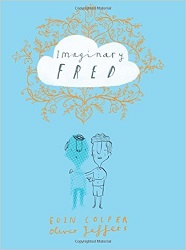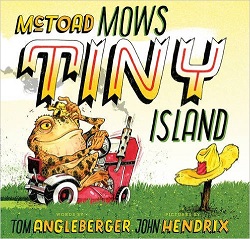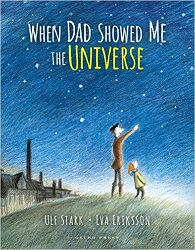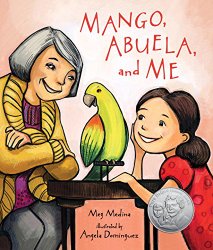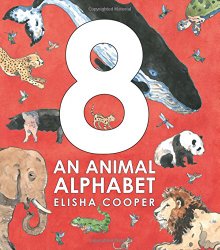Review of Imaginary Fred, by Eoin Colfer and Oliver Jeffers
by Eoin Colfer
illustrated by Oliver Jeffers
Harper, 2015. 48 pages.
I have to admit, I have a problem with Imaginary Friend books. Including award-winning ones. Somewhere, the mechanism (that they do have a life of their own) breaks down. My suspension of disbelief is never perfect, and I can’t thoroughly enjoy the book.
That said, this one has less lack of logic than most. And the illustrations are by Oliver Jeffers!
Perhaps I was won over that the book acknowledges right from the start that not everyone who wishes for an imaginary friend gets one. It will only happen if “the conditions are just right, and if you add a little electricity, or luck, or even magic.”
Fred is an imaginary friend who likes it when he’s summoned. He tries to be a good imaginary friend.
But no matter how hard Fred tried, the same thing happened every time. One day, his friend would find a real friend in the real world.
A friend who did not have to be ignored when grown-ups were around.
When this day came, as it always did, Fred would feel himself fade.
Eventually, the wind would blow him up to a cloud, where he’d wait to be summoned by another lonely child.
When Sam summons Fred, Fred knows he’s different. They share more interests than any friend Fred has had before. When Sam makes a real friend, Sammi, Fred is sure he’s doomed… until he meets Sammi’s imaginary friend Frieda.
From there, things don’t proceed as they have before. Eventually we learn that “friendship is friendship. Imaginary or not, the same laws apply.”
Part of the fun of this book is in the details. Sam and Fred, who both love to read, are pictured reading the authors’ books, Artemis Fowl and Lost and Found. When the four friends perform in a quartet, grown-ups in the audience are very confused. I like when the friends practice speaking French.
Okay, there are still quibbles. If there’s an “imaginary community” as we learn at the end, how is this the first friendship between two imaginary friends, anyway?
But when it comes down to it, I can overlook my quibbles, because I kept coming back to and enjoying this book. If it tried to be general it would fail, but as a story about these particular four friends? This is an entertaining story which rewards repeated readings and gets you thinking about imagination and friendship and how they come together.
eoincolfer.com
oliverjeffersworld.com
harpercollinschildrens.com
Find this review on Sonderbooks at: www.sonderbooks.com/Picture_Books/imaginary_fred.html
Disclosure: I am an Amazon Affiliate, and will earn a small percentage if you order a book on Amazon after clicking through from my site.
Source: This review is based on a library book from Fairfax County Public Library.
Disclaimer: I am a professional librarian, but I maintain my website and blogs on my own time. The views expressed are solely my own, and in no way represent the official views of my employer or of any committee or group of which I am part.
What did you think of this book?
